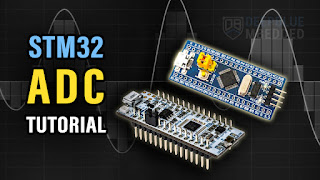Does all microcontroller code run in loop?
Short answer: almost all applications on microcontrollers are designed to run “forever”, usually inside some kind of loop – but not every single line of code is literally inside a while(1) loop.
Let’s unpack that a bit.
1. Why “infinite loop” is so common
Microcontrollers usually:
-
Power up
-
Run some startup code (set up stack, clocks, memory)
-
Call your
main() -
Then are expected to run as long as the device has power
Unlike a PC program, there’s no operating system saying “OK, you’re done now, exit”.
So firmware is typically structured as:
This is why you see so many:
-
while(1)in bare-metal C -
for(;;)in some code -
loop()function in Arduino (which the core actually calls in a loop internally)
So: the top-level logic is usually in a forever loop.
2. But not everything is a loop
Several important bits are not “running in a loop” in the usual sense:
a) Interrupt Service Routines (ISRs)
ISRs run when hardware events happen (timer tick, UART RX, pin change, etc.).
-
The CPU jumps into the ISR, runs a few instructions, then returns to whatever it was doing.
-
So ISRs are event-driven, not looping.
b) Startup code / initialization
Before your superloop starts, there’s one-time code:
-
Copying
.datafrom flash to RAM -
Zeroing
.bss -
Initializing clock PLLs
-
Running
C++constructors
That code runs once, then never again.
3. RTOS systems: many little “loops”
With an RTOS (FreeRTOS, Zephyr, etc.), you often have tasks:
-
Each task is typically an infinite loop.
-
A scheduler switches between tasks, so it’s no longer one big
while(1)but many smaller loops.
4. Can you write MCU code that doesn’t loop?
You can, but it’s unusual:
-
Example: a very simple piece of code that:
-
configures something once,
-
maybe sets some pins,
-
then goes into deep sleep and never wakes.
-
Even then, the CPU either:
-
sits in a sleep instruction inside an infinite loop, or
-
halts in some implementation-specific way.
If you let main() just return, many C runtimes on MCUs will:
-
Jump to a default infinite loop, or
-
Reset the MCU.
So the system still “loops” at some level to keep the chip alive.
5. Mental model to keep
-
Application level: almost always some form of forever loop (superloop or RTOS tasks).
-
Interrupts: small event handlers that run briefly and return.
-
Startup and init: one-shot code before the loop starts.
-
Hardware: if there were truly no loop and no sleep, the core would just sit at the last instruction, which is effectively a tiny loop anyway.
So:
Not every line of microcontroller code runs in a loop, but practically every meaningful firmware is designed around one or more infinite loops, because the device is supposed to run continuously as long as it’s powered.




评论
发表评论